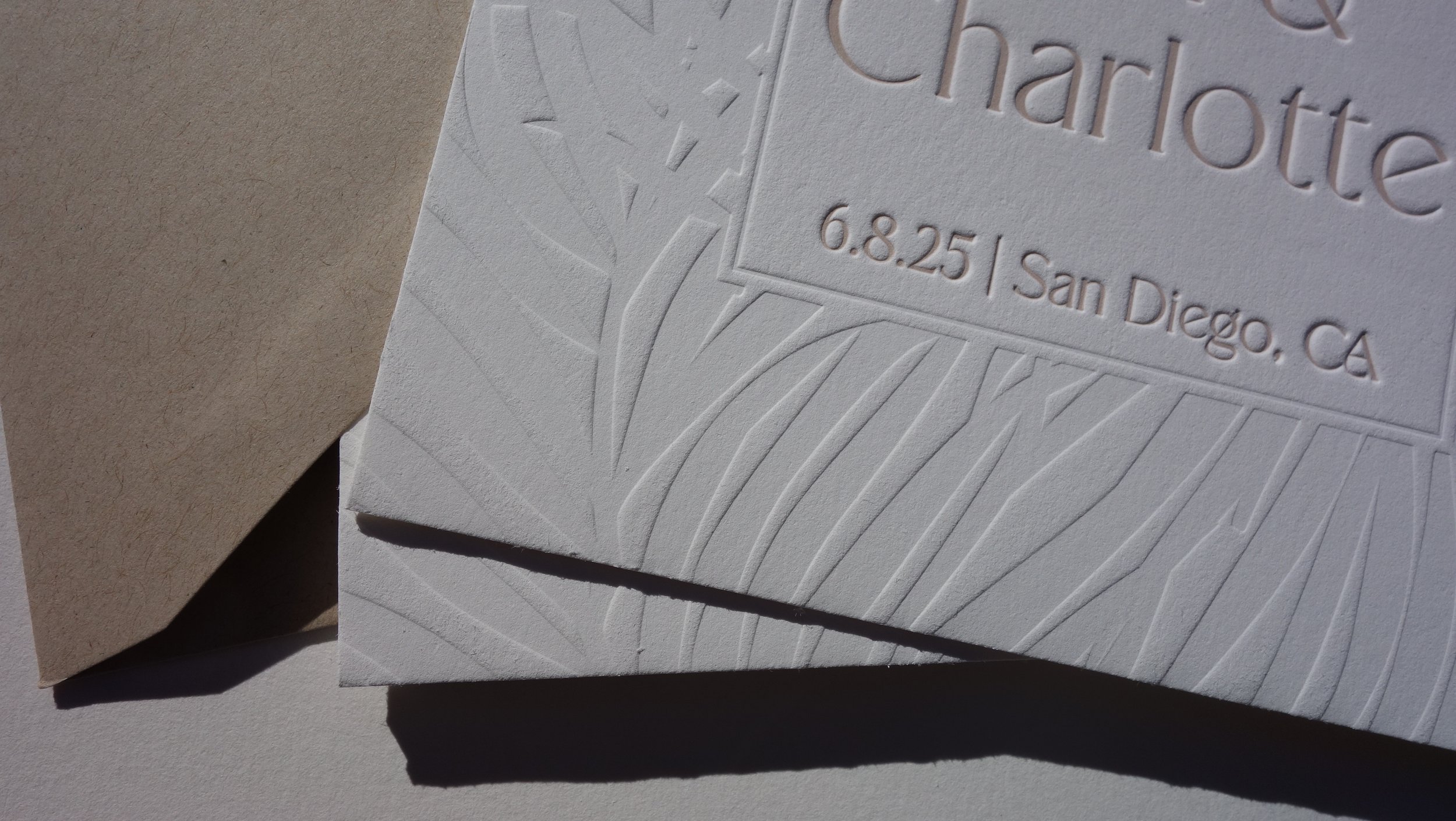Letterpress terms: Emboss vs deboss (and what is blind deboss?)
In the letterpress world, as in probably every industry, there are a lot of terms that get thrown around and by now, you've probably come upon some of them as you begin to determine what sort of style you'd like your invitations to have. If you're feeling confused, here's a quick guide on some of the terms involved in letterpress printing.
Debossing
Most letterpress-printed pieces you'll come across are debossed. It's the basic action of the press—pushing the image into the paper to create an impression. Generally, a raised image (usually referred to as a plate) is inked and pressed into the paper, creating an impression, from light to deep, depending on the size of the image and the style the printer is after.
Blind Deboss
Also called blind letterpress, this is when the piece is printed without using any ink, only the impression. (Sometimes we use the palest gray ink, just so the image has a little more visibility. But um...I call it blind deboss! So did that help clear things up?)
In the image, the leaf pattern around the edge is blind deboss.
Emboss
Embossing refers to printing that results in the image being raised up from the paper. It involves using two mirrored plates and squishing the paper between them. Because it uses an extra plate and an extra bit of finagling, it's usually a bit more expensive than regular letterpress.



